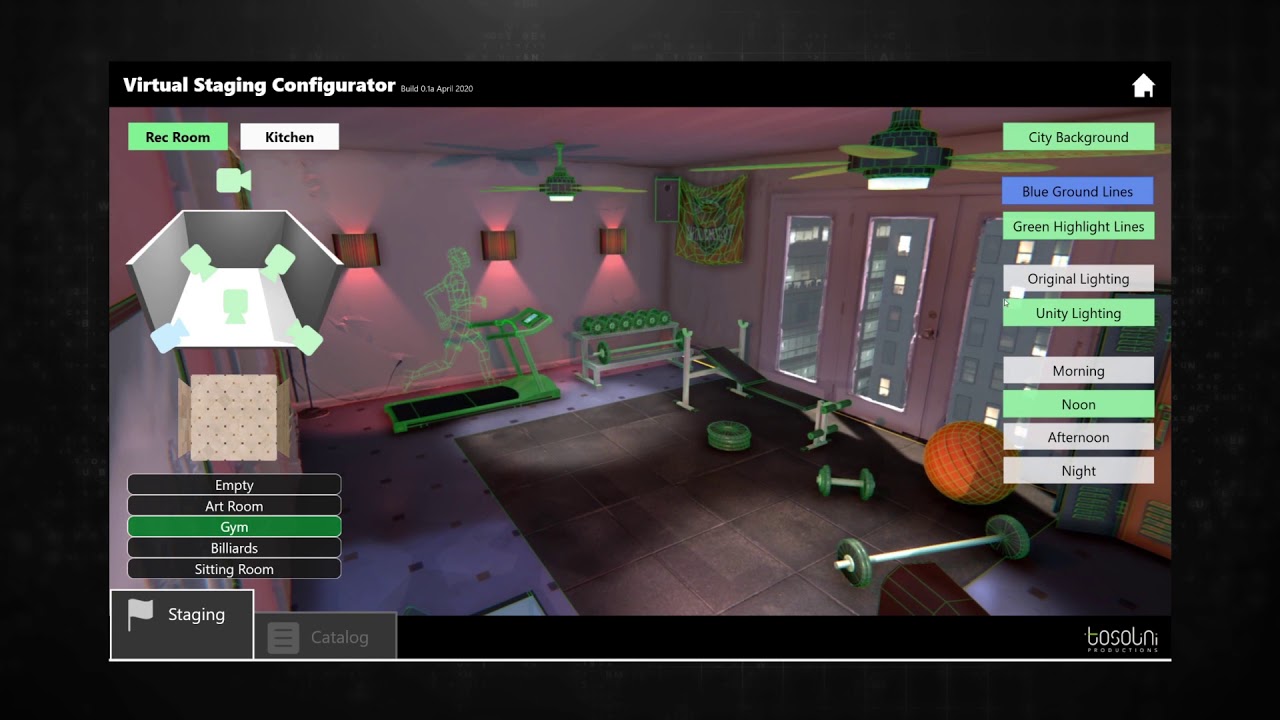The ‘Virtual Staging Configurator’ is a demonstration of Intuiface, Unity3d, and Matterport leveraged to create a dynamic real-time experience.
The experience is centered around a real-world scan of an empty property. It is filled and rendered with virtual furniture using Unity3d and controlled via an Intuiface frame.
Unity runs in the back, and Intuiface runs on top with a transparent background. Unity interactions work normally under Intuiface’s pass through background, with other Intuiface elements taking precedence over Unity screen interactions.
The experience starts with a brief intro to provide context, and lands on a 3d view of the empty house. Here, layouts and graphic settings like time of day can be adjusted. There is also a catalog mode that mocks-up a way to display individual 3d content.
The challenge
A core goal for this project was to send messages between Intuiface and Unity3d over a computer’s local network- to have buttons in Intuiface influence Unity, and vice versa. Intuiface has built in methods to call and listen for triggers over a local network:
Unity does not have a built-in method. This forum post outlines the basis of how to accomplish local network communication:
For cross communication, Unity is listening for various URL terms linked to actions and has the ability to call URLs that Intuiface listens for. The result is a nearly instant triggering of actions between the programs, opening Intuiface to Unity’s world of real-time 3d rendering.

Resources
During development, these resources were helpful:
- Unity3d Asset Store: There are many affordable resources here to help fill out scenes with content and interactions.
- DOTween and Lean Touch+ were instrumental in setting up the room layout transitions and camera movement.
- https://www.cgtrader.com/ has affordable 3d models to fill gaps in content.
- https://quixel.com/megascans/home & https://source.substance3d.com contain many surface textures which can be used for architectural renderings.
We hope this project adds inspiration for future technological mashups!
Full credits to our XR designer Michael Gelon. Special thanks to @Seb for assisting us in this Unity + Intuiface R&D journey.
Check out also Tosoville: Intuiface meets Unity3D.
